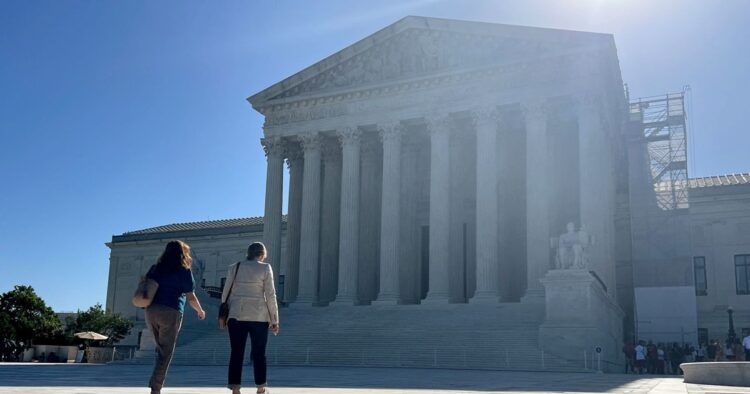On Friday, the Supreme Court ruled against the Trump administration’s ban on bump stocks, with a vote of 6-3 split along ideological lines. Bump stocks are attachments for semiautomatic rifles that increase firing speed to approach that of a machine gun. The justices determined that the administration had exceeded its authority by classifying bump stocks as machine guns.
The case, brought by Texas gun shop owner Michael Cargill and supported by the New Civil Liberties Alliance, challenged the power of federal agencies like the Bureau of Alcohol, Tobacco, Firearms and Explosives (ATF) to regulate firearms accessories.
This ruling is seen as a blow to governmental efforts to address gun violence, given the stalled progress on legislative measures in Congress.
Justice Clarence Thomas authored the majority opinion, arguing that the ATF’s rule went beyond the agency’s statutory limits. Justices Sonia Sotomayor, Elena Kagan, and Ketanji Brown Jackson dissented, contending that bump stocks effectively turn rifles into machine guns, which are heavily regulated under federal law.
During the case’s oral arguments, justices grappled with understanding how bump stocks work and whether they meet the legal definition of a machine gun. The device achieves its effect by allowing the firearm to fire rapidly through a sliding mechanism, rather than a single trigger pull as required by existing definitions under the National Firearms Act.
The ruling underscores broader legal debates about administrative overreach and the scope of agency authority. It does not directly challenge Second Amendment rights but instead questions the regulatory power of administrative agencies in defining and restricting firearm accessories.
Advocacy groups on both sides are expected to react strongly, with gun rights advocates celebrating the decision as a defense of lawful firearm ownership. Meanwhile, proponents of stricter gun control measures view it as a setback in efforts to curb gun violence through regulatory means.
The Supreme Court’s decision to strike down the bump stock ban marks a significant legal precedent in firearms regulation, clarifying the limits of administrative authority and setting the stage for potential legislative action on gun control in the future.

















Comments